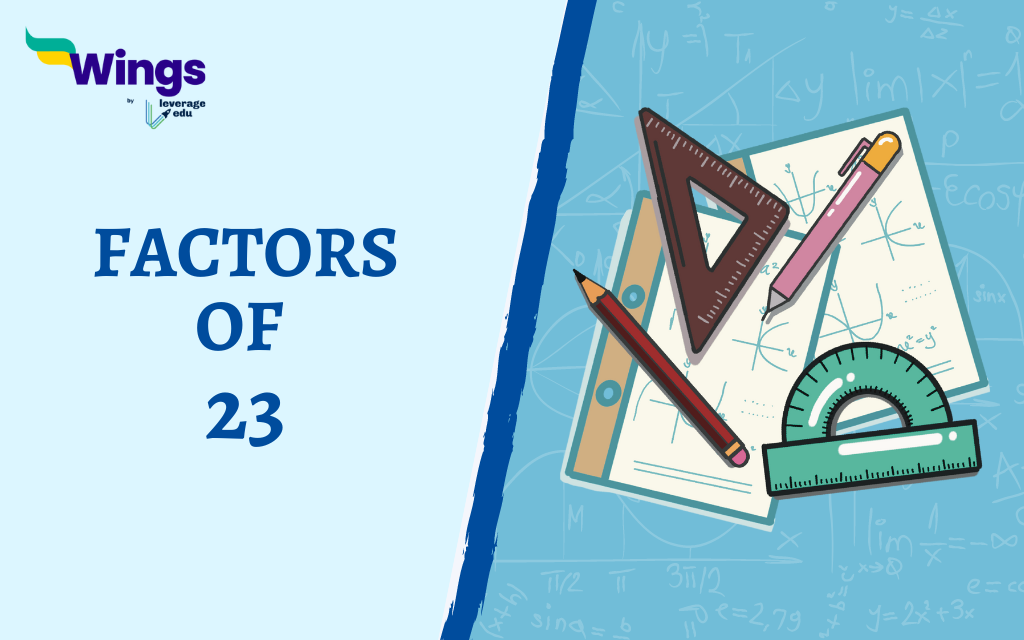Ever wondered how many ways there are to divide a number into equal pieces without leaving any leftovers? In mathematics, factors of 23 are typically used to compute area, identify the dimensions of squares, and find multiples in a variety of settings, including engineering, banking, and timekeeping. Moreover, finding factors of a number is important in elementary school education as it can help children understand Multiplication and Division, Build
Number Sense and also Introduce kids to the Concept Of Prime and Composite numbers. Continue reading to discover more about the Factors of 23, including their factor pairings, the division method, and HCF!
Contents
Also Read: All You Need to Know About HCF and LCM
What are the Factors of 23?
In mathematics, a factor is any number that divides into another number without leaving a remainder, Therefore, a factor of the dividend is the divisor. Moreover, 23 is a prime number, meaning that it can only be divided by one and itself. The lowest prime number made up of consecutive digits is 23.
So the factors of 23 are:
- 1 (One divides evenly into any number)
- 25 (The number itself is always considered a factor)
The Factors of 23 are 1 and 23, but it is also important to know that a number can have negative integers as well, so the negative factors of 23 are -1 and -23.
Factors of 23 by HCF and Division Method
Also Read: Algebraic Identities: Examples and Chart
Method of Prime Factorization: Division Methods
You can also find factors of a number by a simple division method:
- Begin with 1, since 1 can be divided with any number it will always be a factor.
- Next, you move on to the next number which is 2 however 2 is not completely divisible by 23 so it is not a factor of 23.
- Keep continuing this process until you reach 23.
- You may determine that the factors of 23 are 1 and 23 using this method since 23 cannot be divided by any other number.
What are Factor Pairs for 23?
The factors of 23 in pairs are the two numbers that when multiplied together, equal 23.
| Positive Pairs | Negative Pairs |
| 1 × 23 = 23; (1, 23) | (-1) × (-23) = 23; (-1, -23) |
| 23 × 1 = 23; (23, 1) | (-23) × (-1) = 23; (-23, -1) |
So the factor pairs of 23 that are positive and negative are (1, 23) and (-1, -23).
What is the HCF of 23?
The greatest number that is a factor of two or more given numbers is called the HCF, or the Highest Common Factor. Furthermore, the HCF of 23 and itself—or any number, for that matter—will always be the greatest factor, which is 23 because there are only two factors in 23: 1 and 23.
Also Read: Word Problems on Arithmetic Operations
What are the Multiples of 23?
All the numbers that result from multiplying a given number by any whole number, including zero, are known as multiples of that number. According to this the multiples of 23 are:
- Multiples of 1: In mathematical terms, all positive and negative integers are multiples of 1, since 1 multiplied by any number gives the same result.
- Multiples of 23: 23 have multiples of 23, 46, 69, 92, 115, 138, 161 and so on because 23 is a number.
Related Blogs
I hope this helps! Did you like learning about the Factors of 23? Keep reading our blogs to learn more about the Basic Concepts of Maths!
 One app for all your study abroad needs
One app for all your study abroad needs














